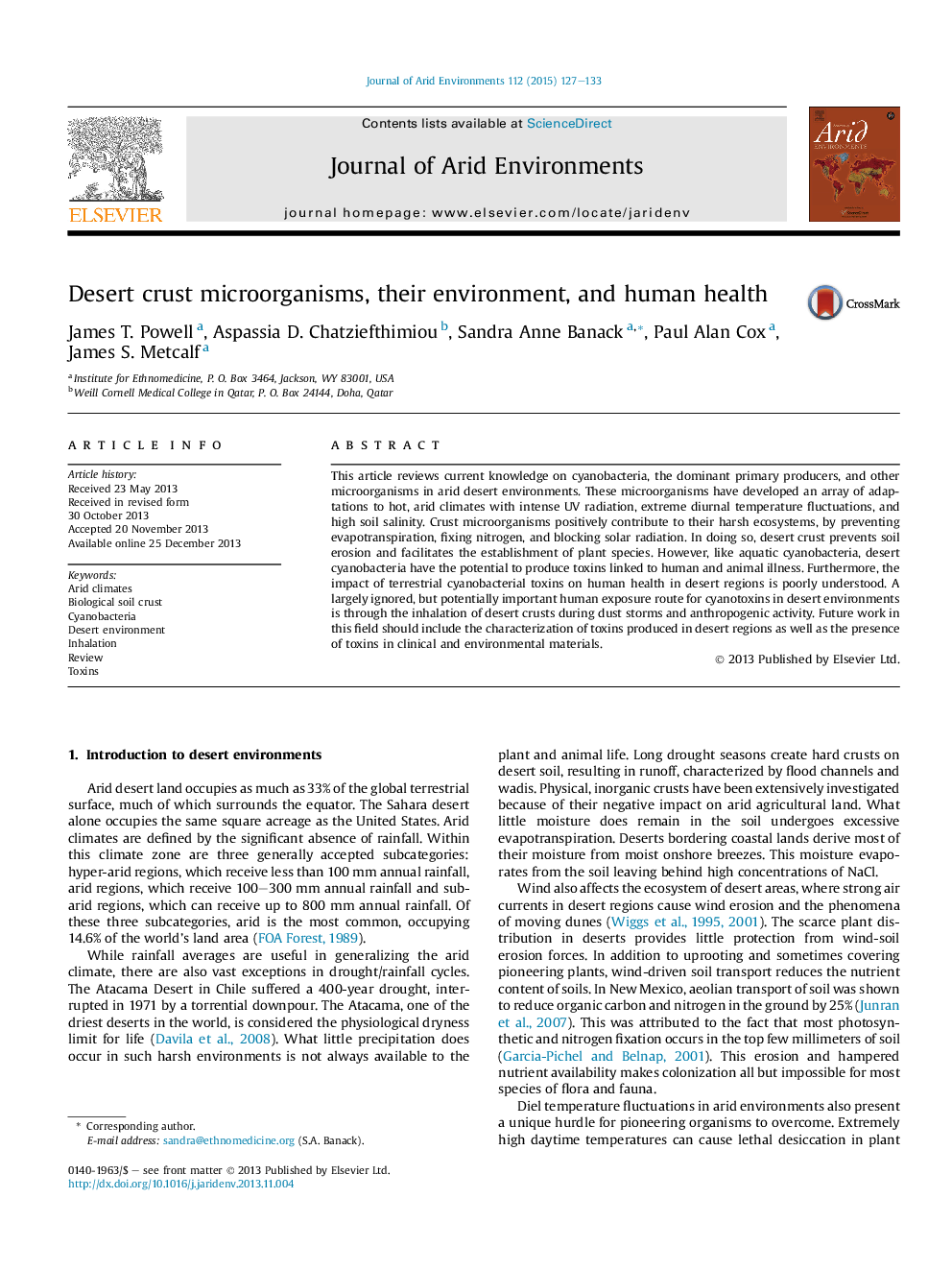| Article ID | Journal | Published Year | Pages | File Type |
|---|---|---|---|---|
| 4392947 | Journal of Arid Environments | 2015 | 7 Pages |
Abstract
This article reviews current knowledge on cyanobacteria, the dominant primary producers, and other microorganisms in arid desert environments. These microorganisms have developed an array of adaptations to hot, arid climates with intense UV radiation, extreme diurnal temperature fluctuations, and high soil salinity. Crust microorganisms positively contribute to their harsh ecosystems, by preventing evapotranspiration, fixing nitrogen, and blocking solar radiation. In doing so, desert crust prevents soil erosion and facilitates the establishment of plant species. However, like aquatic cyanobacteria, desert cyanobacteria have the potential to produce toxins linked to human and animal illness. Furthermore, the impact of terrestrial cyanobacterial toxins on human health in desert regions is poorly understood. A largely ignored, but potentially important human exposure route for cyanotoxins in desert environments is through the inhalation of desert crusts during dust storms and anthropogenic activity. Future work in this field should include the characterization of toxins produced in desert regions as well as the presence of toxins in clinical and environmental materials.
Related Topics
Physical Sciences and Engineering
Earth and Planetary Sciences
Earth-Surface Processes
Authors
James T. Powell, Aspassia D. Chatziefthimiou, Sandra Anne Banack, Paul Alan Cox, James S. Metcalf,
